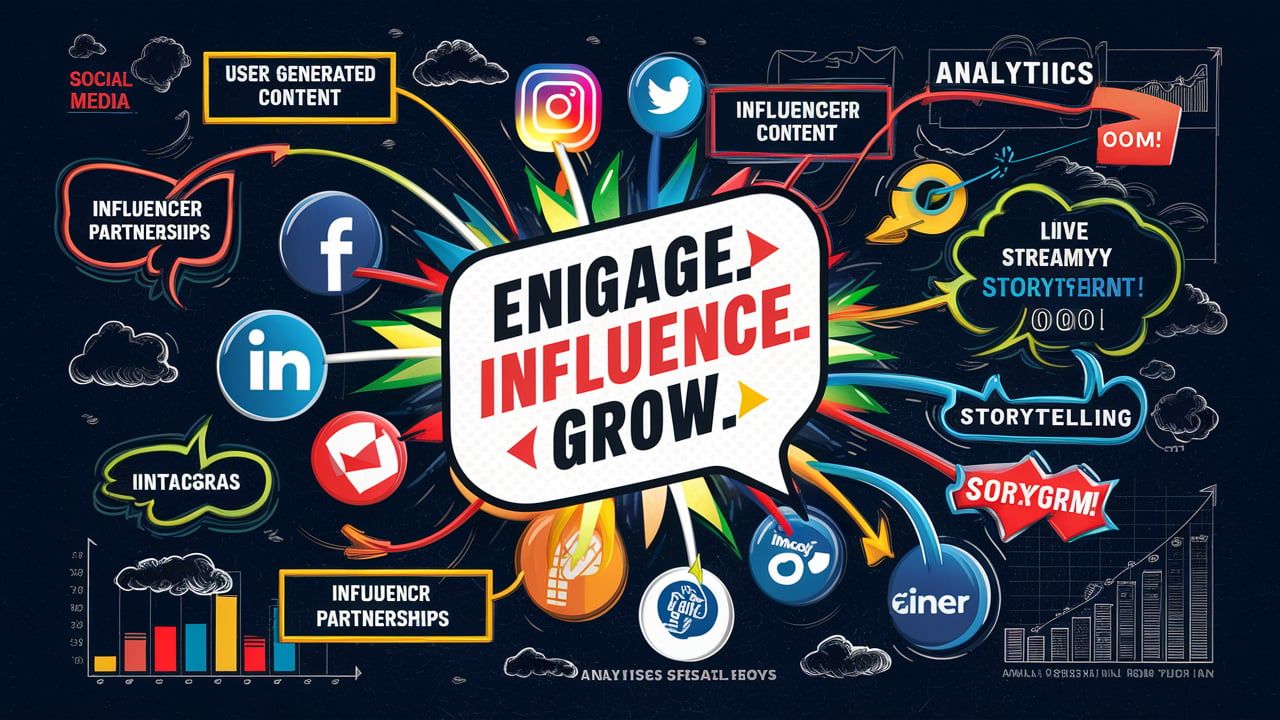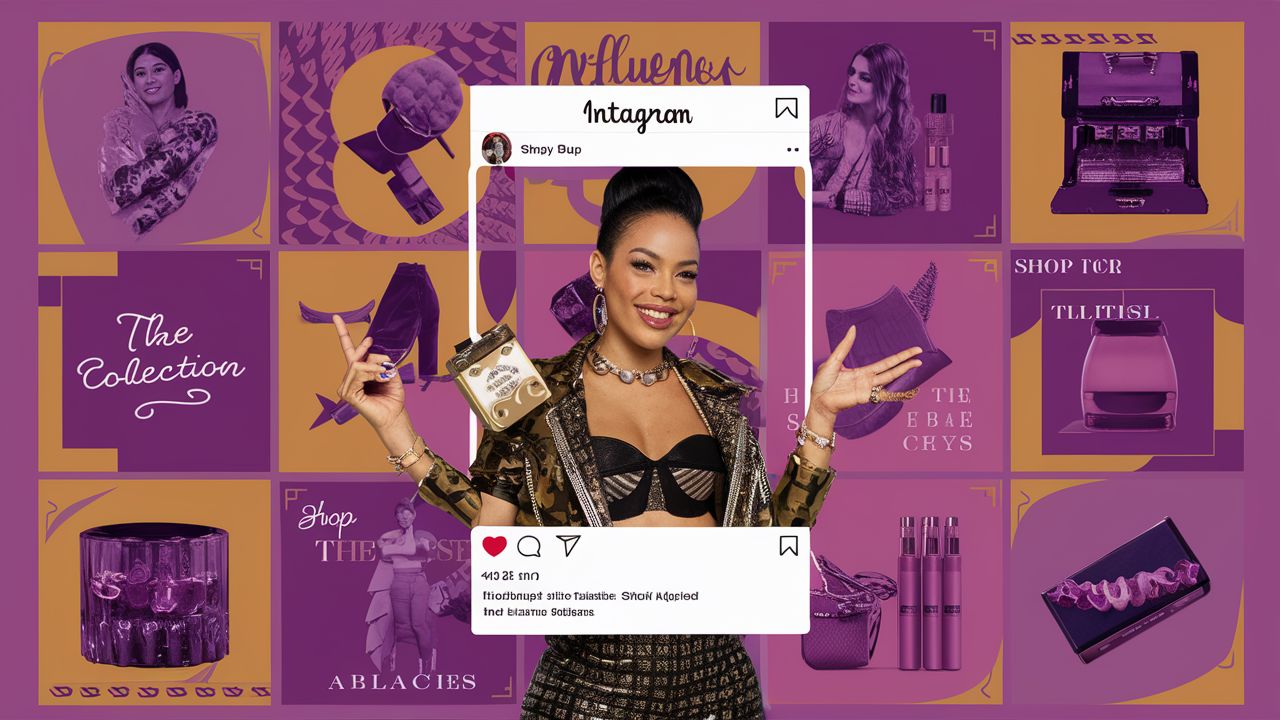How to Create Social Media Marketing Strategies
Published on 22.08.2024 by Chizoba T
If you want to succeed in online marketing, a social media strategy is very important. With over 60% of the world's population on social media, you must be there to engage, influence, and convert your audience. However, just having a presence on social media platforms will not work. You need to understand how to serve and engage with your audience.
A social media strategy is the game plan for creating, coordinating, and distributing your business content. With the right strategy, you can be assured of balanced content in its purpose, tone, and subject matter. However, creating an excellent strategy can be challenging with so many social media tools, products, and features. This article will guide you in doing so.

What is a Social Media Strategy?
A social media strategy is a comprehensive plan outlining your social media goals, the approach you will use to achieve them, and the right metrics to measure your performance. This strategy can be helpful in driving engagement and brand awareness for the target audience. It can also help generate leads and cultivate better customer relationships.
A social media strategy consists of content creation guidelines, engagement strategy, target audience, and posting cadence to promote your brand and business. It outlines how to connect with your target customers, advertise new features and products, and promote special offers.
Why is a Social Media Strategy Important?
You can run a one-off campaign and get positive results. However, you might not understand why the post or campaign succeeded, and it might be hard to continue getting such positive results. Thus, you can see positive results by having an excellent social media strategy.
An excellent social media strategy can help you set goals, measure performance, and adjust your campaign. The goal is the starting point for determining what is working and what isn't. It also helps you set expectations for your campaigns by choosing one that is best suited for your goals.
How to Create a Good Social Media Strategy
There are several steps to follow in creating an excellent social media strategy. These are:
Set Your Social Media Goals
It can be hard to determine the best strategy unless you understand your business's goals. Is it to create brand awareness, understand your target audience, or generate leads? It is ok to have several goals, but you need to realize that each will require different tactics. When setting goals, start by setting the Key Performance Indicators to determine the essential metrics. According to a Sprout Social study, most businesses track several metrics. These include:
- Engagement metrics such as comments, likes, and shares.
- User demographics and growth rate.
- Impressions and reach.
- Click-through rate.
- Reach and impressions.
- Lead generation and conversion rates.
If you run a social media campaign on a different platform, you must set metrics for each platform. For instance, if you run your campaigns on Facebook, you can measure impressions, engagement, and reach. On the other hand, you can measure metrics like profile visits, story discoveries, and profile visits on Instagram. If you run a Twitter campaign, you can calculate the shares, follower counts, and link clicks.

If you run a social media strategy for TikTok, you can track other metrics such as audience growth, virality, and amplification.
Defining Your Target audience
Unless you understand your audience well, it can be hard to know what type of content to create for them. But when you do, you can create personalized messages that leave your target customers talking about your brand. One way of understanding your target audience is by conducting market research. You can research your audience using online surveys, setting up focus groups, customer interviews, and polls on LinkedIn, Threads, and other platforms.
You can also use social listening to understand your target audience. You can do that using social listening tools such as SparkToro, BuzzSumo, and Followerwonk. Whichever method you choose, ensure that you create a buyer’s persona consisting of an image of your ideal customer. You can have multiple personas to get different customer demographics, insights, and pain points if necessary.
Perform a Social Media Audit
Assuming that you are already on a few social media sites, you need to perform an audit to determine if your current strategy is working. The audit should provide a clear picture of the purpose of each social media account. Here are several questions you need to ask yourself:
- What part of my strategy is working, and what isn't?
- What audience are you engaging with?
- Which are the valuable partnerships you have made?
- What networks are your target audience using?
- How is your social media presence compared to that of the competitor?
After understanding this information, you can easily find the areas that need improvement. To determine if a social media platform is right for you, ask yourself these questions:
- Is this where my audience is?
- If it is, how do they use the platform?
- Will using this account help me achieve my goal?
You can stay focused on your social media strategy by answering these questions.
Carry Out Competitor Research
Investing time and resources in a competitor analysis is essential when creating a social media strategy. This will provide you with insights into what your competitors are doing. Competitor research will provide insight into details such as:
- The social platforms they are using.
- The voice and tone of the messaging.
- Target audience according to the platform.
- Branding style.
- Type and format of the content they create.
- Types of campaigns they create such as polls, company news, gated content, etc.
- Customer interactions.
- Social commerce options.
Understanding how your competitors engage with customers and whether they see success in that engagement can help you determine whether to emulate them.
Select a Social Media Platform
As noted earlier, a social media strategy involves connecting with your audience on social media and marketing your brand to them. You also need a strategy for each social media platform when determining which to use.
Remember that not all social media channels will suit your business, especially small ones. Therefore, you don't need to be in all of them. Instead, ensure that you create the right content for each platform. Here are ways to do that.
Facebook is undoubtedly the biggest social media platform, with over 2 billion users. It offers a targeted way of engaging with customers and prospects. If you want to connect well with your customers, you can use the Facebook live button.

TikTok
As one of the fastest-growing platforms, TikTok allows you to share different content. The platform is popular for its short and quirky videos that can be used for marketing purposes. However, in the recent past, it has started accepting longer videos. One of the best ways of using TikTok in your social media strategy is to create user-generated content with influencer collaboration.
Instagram is considered the perfect platform for posting visual content. It is a hit, especially among younger audiences, and has grown tremendously recently. Therefore, you can use it to connect with your customer base to showcase your products. The app also has an in-app shopping feature that allows you to create shoppable posts to enable customers to buy your products or services directly on the platform.
X
In the last two years, major transformations have occurred with how things are done on X. However, it remains a top platform for sharing relevant and timely content. Brands can use X to provide better customer service and create quick replies. They can also use trending hashtags to enable customers to discover trending content.
Whether you are a B2B or B2C, LinkedIn is one of the platforms that will serve you well. You can use it to create a wide range of content, such as blogs, ebooks, whitepapers, and other industry-specific content. Recently, there has been an increase in the popularity of audio and video content on LinkedIn. Therefore, you should add such content to inform and engage.
Pinterest is a social discovery platform where people get inspiration for their videos and images. The app accepts pins from millions of fans in different areas, such as recipes and home decor. If you are wondering how to incorporate Pinterest into your social media strategy, you can do that for content curation.
YouTube
YouTube has one of the highest user bases, with 2024 statistics indicating that it has overtaken Facebook in the number of users. Therefore, you can use YouTube marketing to promote your products, provide customers with information, and entertain them. The platform is an excellent choice for brands that create many how-to videos. With many people using YouTube to search for content, it is also a great product discovery platform.

Content Planning
The next step in creating a social media plan is deciding the content type to post. In the recent past, there has been an increase in the popularity of short-form content. That means people no longer have the patience to go through long-form content. When creating a content plan, there are several tips to remember. These are:
- Target the light purchasers. Studies indicate that customers who buy in bulk only make up 5% of potential customers. On the other hand, light purchasers make up 20% of buyers. Therefore, you should consider targeting light purchases.
- Building a brand takes time. A social media strategy aims to do the same but requires time and resources.
- Have a brand voice. Avoid having too many voices for your brand, which may confuse your customers. Too many messages can also make your brand message less memorable.
- Create an emotional connection. By triggering the customer's emotions, you can create great memories of your brand, making the brand more popular.
- Use the right brand assets. Slogans, logos, characters, fonts, and color schemes can increase your emotional connection with the target audience.
- Focus on natural content. In recent years, natural content such as talking heads and product shorts has become more popular, as it is more relatable and effective than staged content. Remember that if you are engaging celebrities, you should ensure that they promote the brand and not just themselves. Creative content has the best result, as most social media users ignore ads.

Here are the steps to follow when creating a social media content plan:
- Have a tone for the page. Consider whether you will be using a formal or an informal tone. Will you be using humor or a serious tone for your business? Remember that each platform has its personality. Therefore, consider speaking differently on each platform and showcase your brand's personality.
- Determine a content theme. You can create a theme that meets your audience's needs depending on your goals. For instance, if you are a wellness spa, you can create content on dealing with back pain.
- Have a content calendar. Posting regularly on social media is very important. One way to ensure that you have order in your social media posting is by having a calendar. This will enable you to determine what content to post on which platform and keep track of the content on multiple platforms. It will also ensure that your content is properly spaced. Ensure you also create time in your calendar to engage with your audience.
- Content scheduling. Keeping up with the social media pages can be daunting. If you are posting consistently, you need to have a schedule. The social media calendar lists the times and dates you will publish content on each channel. It could be images, videos, resharing of UGC content, or blog posts. Depending on your previous engagement rate, impressions, and more, you can plan the content calendar to determine the best posting times.
If you are wondering how to create great social media content, here are tips:
- Optimize your content. Tweak your social media posts to improve their performance. Use the right content, tone, and message for each platform.
- Consider different angles. Consider the type of content that is likely to work best for your audience. Is it how-to videos, humor content, or video testimonials of your previous customers?
- Monitor the content's performance. Analyze the content regularly to determine what is and what is not working.
- A/B testing your content. This involves creating different types of content to determine which one works best. Use it to determine if one keyword works better than the other. Try new things and avoid sticking to the same format always.
- Track KPIs. Return to the same KPIs to determine if you are on track in content creation.
Incorporate Social Commerce
Social media has become more than a platform to engage with one another; it has also helped in product discovery. On top of being a product discovery tool, social media has also become a platform for convenient shipping.

According to one study, 25% of social media marketers confess to seeing better results in their social shopping tools. Another study indicates that 25% of social media users aged between 18 and 44 have previously bought a product on social media. These statistics indicate that social shopping should be part of your social media strategy.
The good news is that most social media sites have included a social selling feature. Instagram Live Shopping and Instagram Shop are some of the top social media tools with a high ROI. On the other hand, Facebook shopping has an average ROI. If you want to be successful with social selling, focus on building customer trust.
You can share testimonials, customer reviews, product data, and user-generated content. You can also use image carousels of videos, images, and ads to increase brand awareness and emphasize the number of brand impressions, engagement, and store visits.
Build Communities and Connections
One of the advantages of using social media is that it is effective in building connections and communities. When you have communities, you can use them to increase engagement and brand awareness. A loyal community will help you have brand advocates and attract new customers.
However, don't expect your community to grow overnight. Instead, take time to build and grow it. An effective strategy for growing a social media community is to be responsive to customers' comments and queries. Remember that you will, at times, encounter negative reviews when your customers increase and your community grows.
This shouldn't make you panic, as negative reviews can drive engagement on your channel. It can also add to the channel's trust and authenticity. Therefore, negative reviews should be used to show exemplary customer service by responding to customer concerns. While humor can help diffuse the concern, you should be careful not to be seen as making fun of the situation.
Grow Your Social Media Following
You are creating a social media strategy to grow your following; therefore, you need to use the right channel to achieve it. You can choose to grow your following organically or by using paid ads. Organic content is essential in attracting new users and driving engagement.
With people using different social media platforms daily, always cross-promote across different channels. If your Instagram marketing post performs well, you can use it for TikTok advertising. However, with a reduced organic reach of social media posts, you should also have a paid ads strategy. When using paid ads, make sure you set a daily budget and your target users. You can hire influencers to promote your brand, products or services. If you are getting started and have a small budget, you can try working with micro-influencers.
Master the Social Media Algorithm
One of the critical steps in setting up a social media strategy is understanding how the social media algorithm works and optimizing your content for the social media algorithm. While the optimization strategy will differ from one platform to the other, here are a few general tips to enable you to do that:
- Use a bold hook. Use either a positive or negative hook to stir your audience. This hook should include an element of urgency, scarcity, or novelty.
- Create quality content. The most critical factor determining the reach of your social media content is the quality. Try different kinds of content to find out which will work best. If you have some best-performing content, reuse and repurpose it well.
- Create raw and authentic content. Social media users and the algorithm love raw content because it feels more authentic.
- Include products. Ensure that your users clearly understand what you are selling.
- Use subtle branding. When branding your content, make it subtle. Add the branding to a product, such as a T-shirt, mug, cap, etc. This will enable people to associate with the brand without being a turnoff.

Conclusion
The social media field is constantly changing, resulting in the emergence of new networks, algorithm changes, and new audience demographics. Similarly, there are moments when your business will go through a change phase. That means you must have a social media strategy that you review regularly and keep changing. Following the above steps will make developing an excellent social media strategy easy. You can also read our guide on creating high-converting Facebook ads.
: